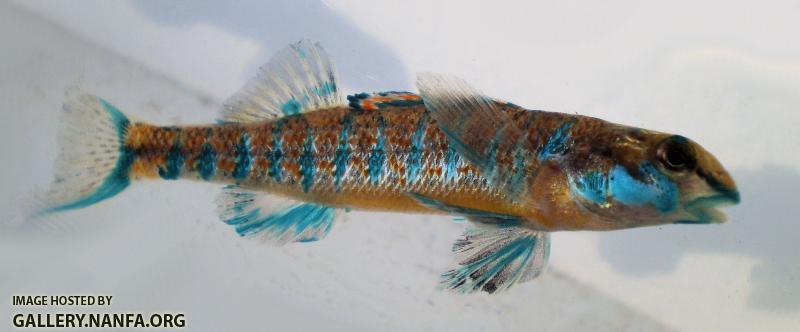Hey Erica,
I certainly can't answer that question for all native fishes, however,
Etheostoma do contain some pigments that need to be praised. Obviously, the color that cells portray are due to molecules, which fall into two distinct classes: biochromes and schemochromes. Biochromes are true pigments, meaning they selectively absorb parts of the visible light spectrum. These differ from schemochromes in that they do not rely on structural refraction or scattering to portray hues. Thus, schemochromes produce coloration through reflecting certain wavelengths of light and transmitting others, by causing light waves to interfere within the structure or by scattering the light which falls upon them. With regard to biochromes: erythrophores, melanophores, and xanthophores are commonplace among vertebrates, however, cyanophores are incredibly rare. Most of the blue and green hues you see in other vertebrates (such as
Ambystoma laterale,
Hyla cinerea, etc) are coming from schemochromes contained in iridophores that rely on structural refraction or scattering, not true pigments, or biochromes.
For percid enthusiasts, this is where the story gets interesting. Remembering that cyanophores are incredibly rare among vertebrates, they have been found in all
Etheostoma thus far examined (to my knowledge) that display blue or green hues to the naked eye! Flashing images of the unbelievable blues and greens of nuptial
Etheostoma blennioides,
E. caeruleum,
E. luteovinctum, and
E. zonale should be coming to mind. Indeed, studies have shown that these colors come from biochromes found within cyanophores, which are an incredibly recent chromatophore subclass added to the list. While the aberrancy of this cannot be overstated, it has also been found in marine perciform fishes in the family Callionymidae (Mandarinfish), in addition to anurans belonging to the families Centrolenidae (Glass Frogs) and Dendrobatidae (Poison Dart Frogs). Even though we did not need another one, here is one more reason to drool, marvel, and protect this magnificent radiation of perciform fishes endemic to North America!
Edited by blakemarkwell, 26 October 2011 - 01:52 PM.










